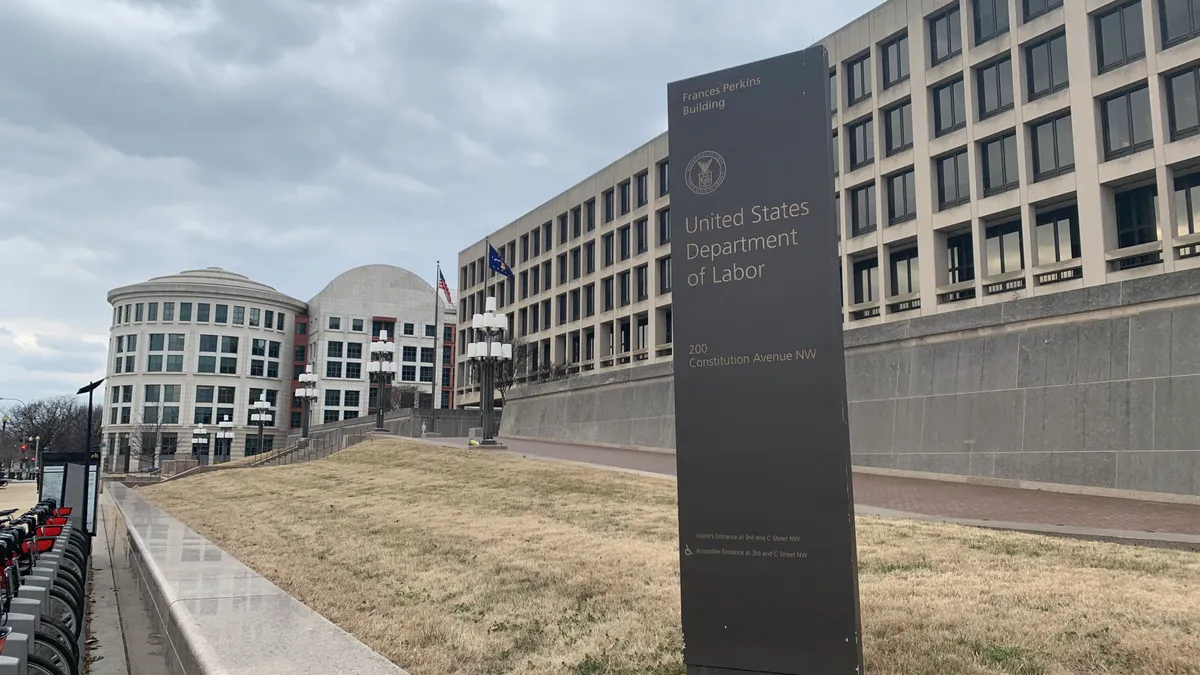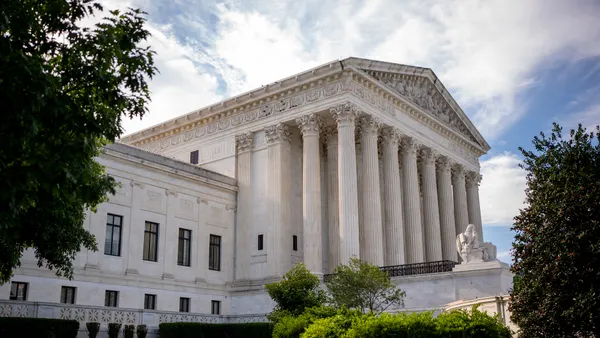An employee working for two ostensibly separate but “operationally integrated” businesses is considered jointly employed, and the employee’s hours worked for the businesses must be combined for the purpose of determining whether their total hours worked exceeded 40 in a single workweek, U.S. Department of Labor Wage and Hour Division Acting Administrator James Macy wrote in an opinion letter Tuesday.
DOL released the letter as part of a batch of four opinion letters this week, two of which addressed employers’ overtime pay obligations under the Fair Labor Standards Act. The agency issued the joint-employer letter — titled FLSA 2025-05 — as a response to an inquiry from a restaurant hostess who worked in a hotel’s first-floor restaurant and second-floor members club.
The employee told DOL that they worked shifts at both establishments for the same rate of pay and would occasionally be clocked in at one while being assigned work to the other. The employee generally worked fewer than 40 hours per week at the restaurant but would be asked to pick up shifts at the members club, which increased their hours beyond 40. The employee was told by the employer that they would not receive overtime pay because the two establishments were different companies, according to DOL.
Macy wrote that the employee would be considered a joint employee of the two establishments because they appeared to be operationally integrated with one another due to physical proximity as well as their sharing of a common kitchen and similar menu items.
While the two businesses may represent separate legal entities, “corporate formalities do not necessarily override the FLSA’s application,” Macy said, concluding that the employee’s hours across the two must be combined for the purposes of FLSA compliance and that the employee should receive overtime pay.
The FLSA’s joint employer regulations have fluctuated over the past few years as successive administrations sought changes. During the first Trump administration, DOL published a final rule instituting a “four-factor balancing test” by which to evaluate potential joint employer relationships, but the Biden administration rescinded the rule a year later. Last month, the agency signaled it would again propose a joint employer rule.
Firefighters’ ‘emergency pay’ must be counted toward overtime, DOL says
A second opinion letter published Tuesday also addressed an employee’s inquiry. A firefighter and paramedic employed by a Texas city government asked whether “emergency pay” received for working during a disaster or emergency declarations could be excluded from the employee’s regular rate of pay.
Macy said that such payments could not be excluded from the regular rate because it did not meet the FLSA’s criteria for either excludable discretionary bonuses or its criteria for excludable overtime premiums.
“As such, the emergency pay should be included in the regular rate of pay used to calculate overtime premiums for any non-exempt city employees who receive such pay,” Macy said.
Broader return to opinion letters
The letters are part of a shift back to issuing opinion letters under President Donald Trump. In June, DOL announced the creation of an opinion letter program allowing stakeholders to send inquiries to five of the agency’s departments.
“Under President Trump’s leadership, we are taking steps to make government more efficient by actively responding to the needs of businesses and workers,” Deputy Secretary of Labor Keith Sonderling said in a press release Tuesday, adding that the letters “provide clear and consistent guidance to the public, ensuring employers have the information they need to comply with the law and positioning them for long-term success.”
Employers that wish to request an opinion letter should mention the specific laws or regulations as well as the factual scenario that they are trying to address, attorneys previously told HR Dive. However, the agency advises against including sensitive personal or business information and asks that interested parties not inquire about an existing investigation or litigation matter.















